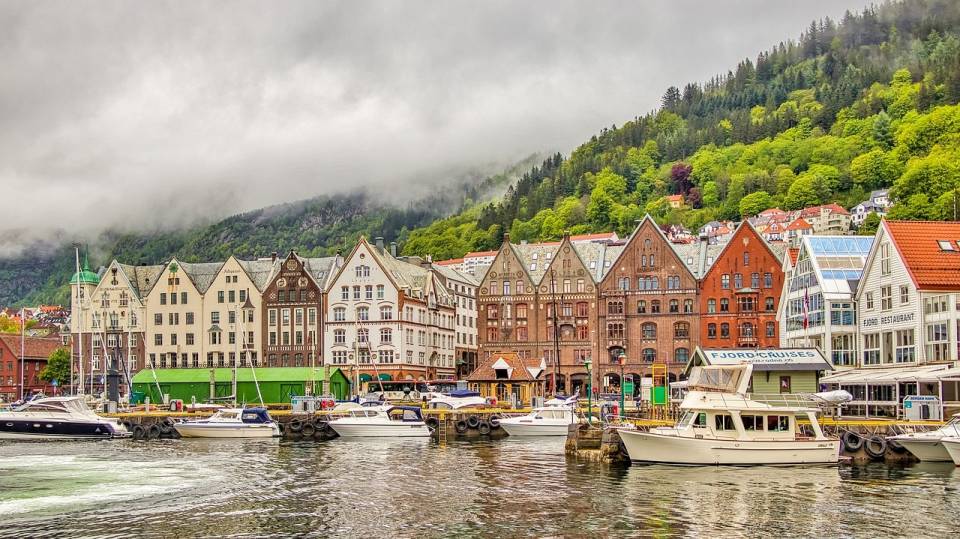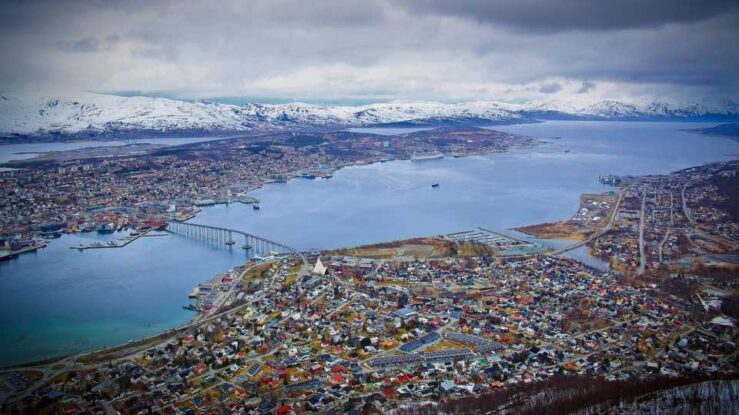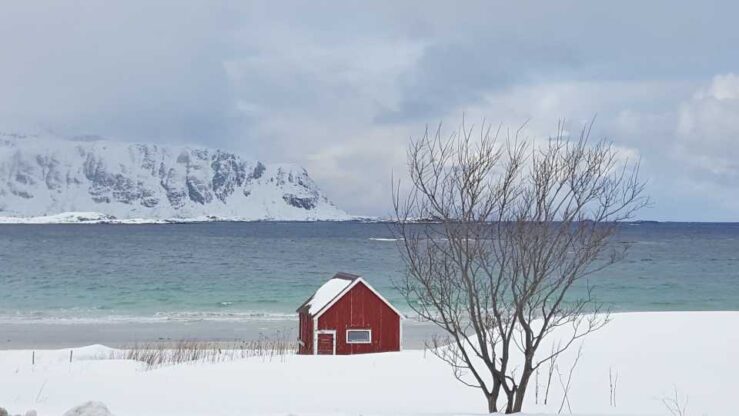Stay 2 Days in Bergen, Norway
Day 1
1. Bryggen
2. Fisketorget – Bergen Fish Market
3. The Sailor’s Monument
4. The National Theatre
5. Old Bergen Museum
6. Troldhaugen – Edvard Grieg’s Museum
Day 2
7. Bergenhus Fortress
8. Skansen
9. Mount Fløien and Ulriken
Despite being known as one of the wettest cities in Norway, with heavy rainfall throughout the year, Bergen ranks high on many visitors’ bucket lists. The second largest city features a gem of historical houses at Bryggen – and is home to one of the most impressive fish markets in Northern Europe.
You can arrive at the coastal town of Bergen either by ferry, plane, train, car or bus. You can make it part of a roundtrip, including some of the fascinating deep fjords, breathtaking mountains and historic towns in the same trip (like the ‘Norway in a nutshell’, which takes you through some of Norway’s topmost fjords, landscapes and seascapes to Bergen, as well as on the spectacular Flåm Railway).
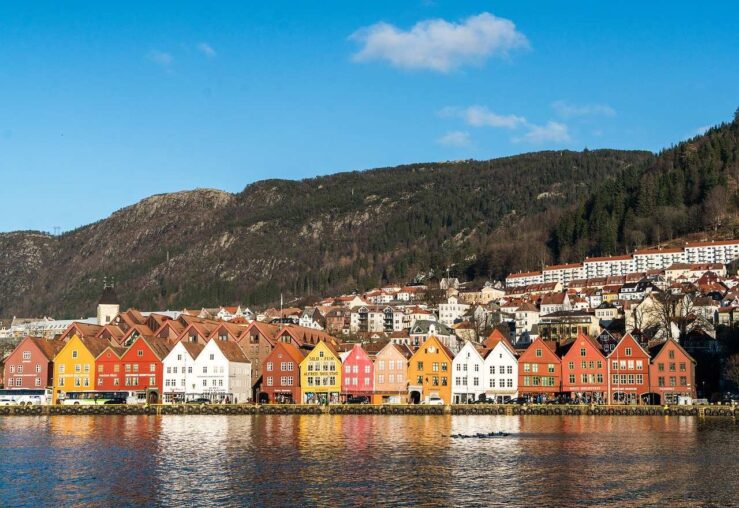
Bergen | Photo: Michelle Maria / Pixabay
A scenic way to arrive at Bergen is from the seaside, where you, on your way through the West Coast archipelago, will pass small rocky islets and islands before reaching Bergen Harbour.
How many days should I stay in Bergen? If you want to experience it all, spend several days in Bergen! We suggest at least two days in the old Hanseatic town to explore the cultural heritage, discover the beauty of the cobbled streets around Bryggen Fish Market, relish in Norwegian fish specialities and get the feel of the surrounding nature!
Day 1Stay 2 Days in Bergen, Norway
On your first day in the UNESCO World Heritage Site Bergen, we suggest exploring the city centre, including the picturesque Bryggen and the world-famous Fisketorget, before visiting one of the unique museums that Bergen features. Make sure to try the fresh Norwegian fish at some time during the day – at Fisketorget or in a restaurant!
It is easy to get around in Bergen since most of the attractions that the city has to offer are within walking distance.
You will start your sightseeing at the waterfront at the enticing, historic Bryggen Wharf.
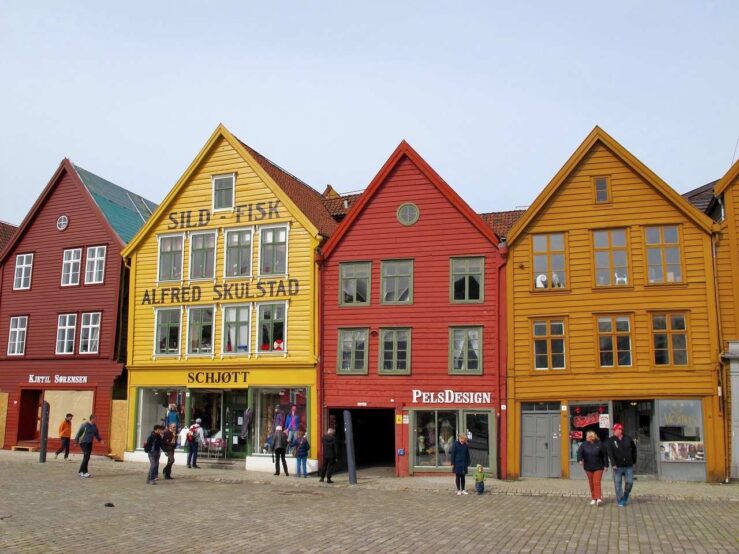
Bryggen | Photo: Hervé Lucas / Pixabay
Go for a stroll along the old wharf flanked by the row of UNESCO World Heritage wooden houses, the series of colourful Hanseatic buildings that Bergen and Norway are so famous for. The former Hansa wooden warehouses are well preserved, and the row of buildings in the historic harbour district is an outstanding example of the Norwegian cultural heritage.
In 1350, the Hanseatic League established a trading place in Bergen, making it one of the most important European trading ports of the time. Here, they controlled the trade in stockfish coming from Lofoten in Northern Norway. The Bergen ‘office’ was one of four overseas ‘Hanseatic offices’.
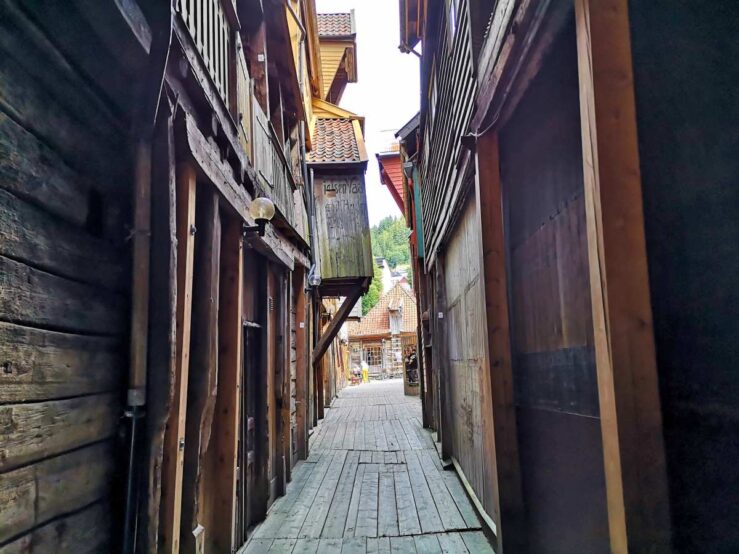
Narrow passages at Bryggen | Photo: Travel In Culture
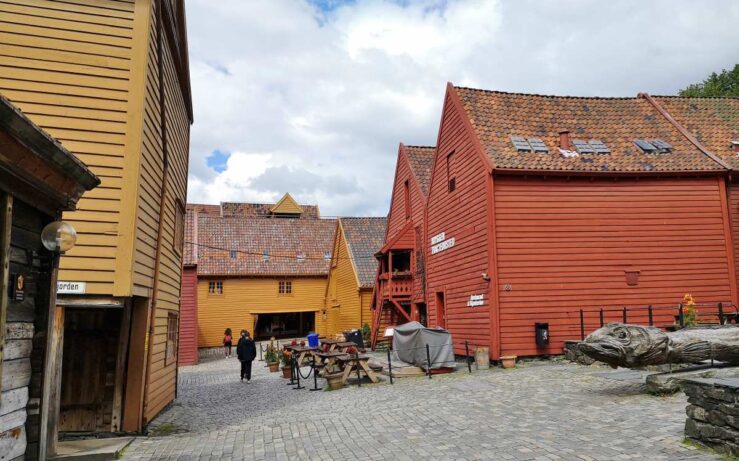
Hanseatic merchants’ houses at Bryggen | Photo: Travel In Culture
Bryggen has been ravaged by several fires throughout the centuries but has successfully been rebuilt every time, following the original structure. The last major reconstruction was in 1702, where the medieval structure of long buildings, interrupted by narrow passages, was preserved. Today, Bergen still features over 60 authentic two- or three-storey buildings erected by the German merchants who arrived centuries ago.
While strolling around between the colourful houses, check out the interesting small craft shops and restaurants established inside the buildings!
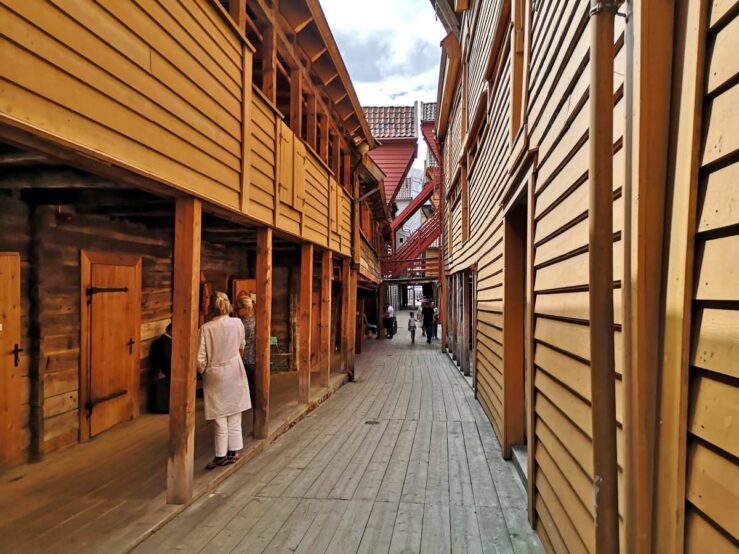
Bryggen | Photo: Travel In Culture
You can continue to the nearby Port of Bergen, which is a relatively large port – the largest in Western Norway. It is a busy port, home to North Sea oil rig units, industrial container ships, many cruise ships and, not least, the traditional Norwegian Hurtigruten ships. Go for a stroll along the dockside to explore the amazingly active port. There is also a ferry terminal connecting Norway with Denmark and Great Britain.
Ålesund – art nouveau town
5 historic sites in Trondheim
Tromsø itinerary 2 days

Bergen Fish Market | Photo: Travel In Culture
Next, you will discover the vivid iconic fish market, Fisketorget, Bergen’s popular fish market, where you can find the freshest fish – and very likely feel tempted to have a bite! You will find all kinds of delicious seafood, fruit, vegetables and flowers here.
The German merchants from the Hanseatic League contributed to the growth of Bergen and its markets. In the 1500s, the Fish Market was separated from the merchants’ trading in the Bryggen area and moved to the inner part of Vågen.
The open-air market opens in May and stays open most days during the summer months, whereas the indoor market is open all year round. You will also find several restaurant options serving seafood and more at the market.
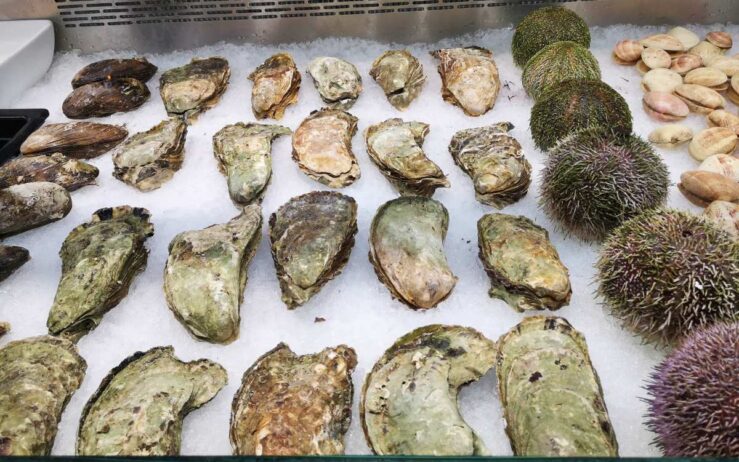
Fisketorget, Bergen | Photo: Travel In Culture
Not far from Fisketorget, you will find The Sailor’s Monument at Torgallmenningen Square.
Admire the 7-metre-high monument in one of the largest and busiest squares in Bergen. It is a tribute to brave Norwegian sailors who have played a role in Norway’s history, created by the sculptor Dyre Vaa in 1950.
Close to Torgallmenningen, you will find another beautiful plaza, Vågsallmenningen.
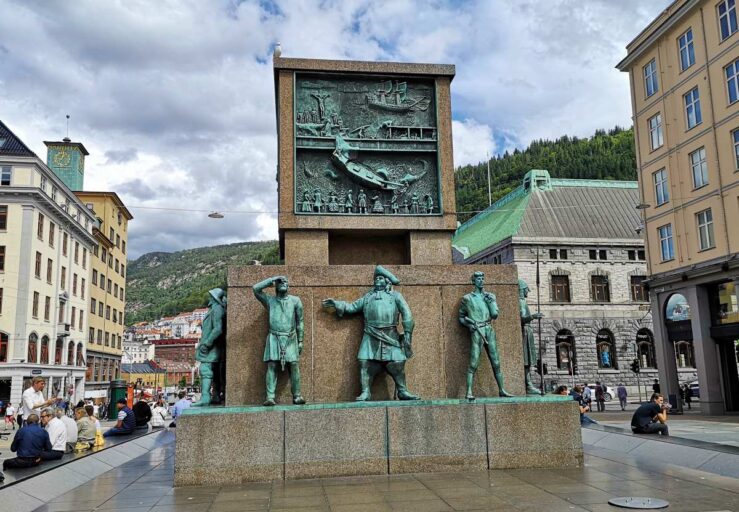
The Sailor’s Monument, Torgallmenningen | Photo: Travel In Culture
Continuing across Torgallmenningen, you will, at the southern end, soon spot The National Theatre, Den Nationale Scene, located at a neighbouring square.
The National Theatre is one of the oldest permanent theatres in Norway and the largest in Bergen. It dates back to 1850 when it opened as Det Norske Theater. The current building dates back to 1909, when the first production was Erasmus Montanus by Ludvig Holberg.
After your morning stroll around historic Bergen, you will, of course, need some lunch (unless you already have had plenty of bites at the Fish Market!).
In the afternoon, you will now either visit the Old Bergen Museum or Troldhaugen – Edvard Grieg’s Museum (or even both if you are very ambitious!).
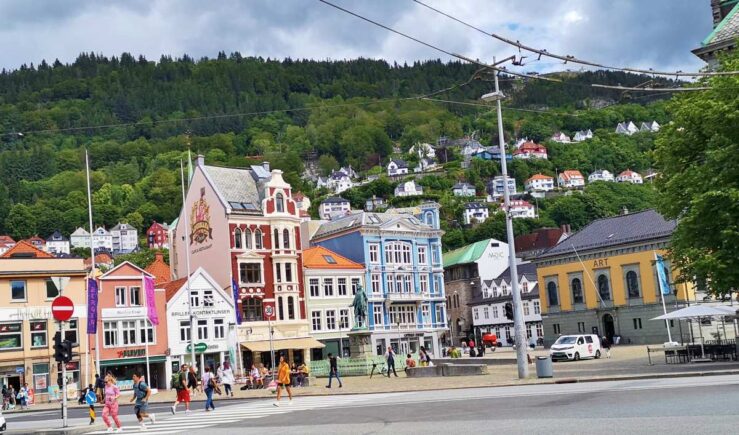
Vågsallmenningen | Photo: Travel In Culture
Visit the open-air city museum Old Bergen Museum, a small Norwegian town with around 50 reconstructed wooden houses. It is about 3 km north of central Bergen, so you can either walk from the city or go by bus or car.
Sometimes ‘actors’ perform here, dressing in the style of former centuries, which contributes to the authentic atmosphere in the small museum town. You can meet both noble people and their servants on these occasions.
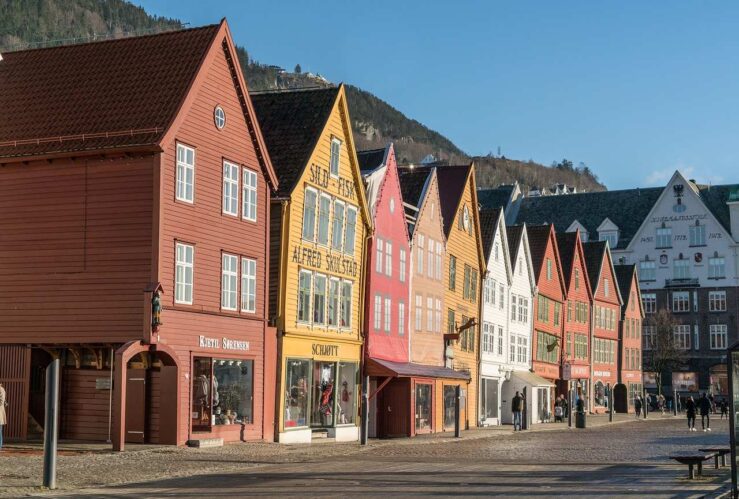
Hanseatic houses, Bergen | Photo: Michelle Maria / Pixabay
Experience Troldhaugen, the former home of the Norwegian composer Edvard Grieg and his wife, Nina Grieg. That is the villa where he composed his music and where his and his wife’s graves are. Today, it is a museum with a permanent exhibition relating to his music and a restaurant.
Edvard Grieg was born in Bergen on the 15th of June 1843 in the Grieg family’s house at Strandgaten 152. He grew up in Bergen, but as a young man, he went to the music conservatory in Leipzig to pursue his career. Later, he came to Copenhagen to be part of the cultural society, before continuing to Oslo, the old Kristiania.
After Grieg’s death, the house was converted into a museum. In 1985 Troldsalen was added, a concert hall with outstanding acoustics.
Troldhaugen is about 10 km south of Bergen, and the easiest way to reach the place is by car.
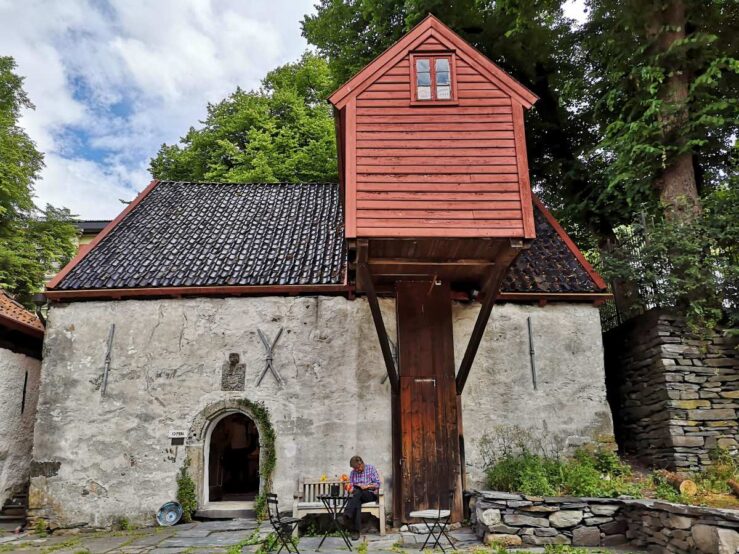
Old Bergen | Photo: Travel In Culture
Day 2
On day 2, in the morning, you will visit Bergenhus Fortress, continue up to the old Skansen, and take an afternoon trip up Mount Fløien or Ulriken by funicular or cable car.
Visit Bergenhus Fortress and the Fortress museum dedicated to the resistance movement during the Second World War.
The area Holmen, where Bergenhus stands, contained in medieval times the royal residence, a cathedral, the bishop’s residence, and a Dominican monastery. Until 1300, Bergen was the capital of Norway and thus the royal city.
As a real gem, Bergenhus features the medieval Haakon’s Hall, an impressive stone hall from the 13th century located inside the fortress.
In the 1500s, the area was converted into a military fortification under the Danish king. For centuries, Bergenhus has stood here in the same location, now and then being adequately restored after destruction. For instance, after World War II, it needed comprehensive reconstruction after being used by the German navy and the construction of a bunker inside the fortress.
Today, Bergenhus is a popular concert venue and a feast hall for special events.
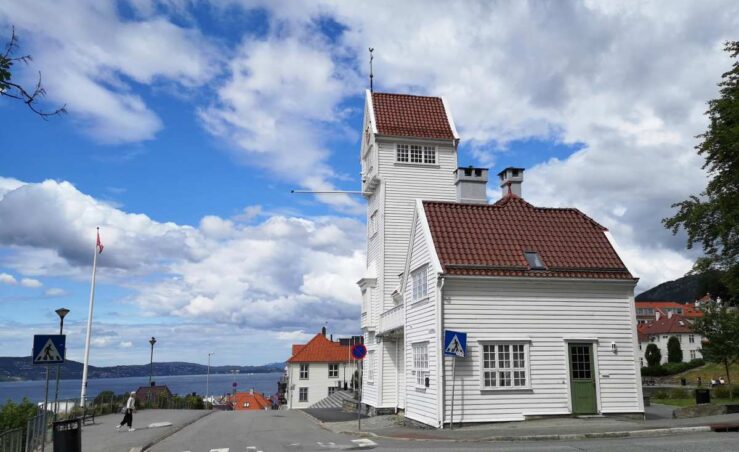
Skansen, the former fire station | Photo: Travel In Culture
You will continue on foot along the steep, zigzagging streets up to the old Skansen. Here, the former fire station, Skansen Brannstasjon, was built in 1903, and it is today an important cultural heritage site in Bergen. From up here, you have panoramic views over Bergen city. That is also why Skansen was designated the perfect location for detecting potential flames in central Bergen more than a hundred years ago.
The wooden fire station was designed by Paul Theodor Bjørnstad, who mixed the style of the period, the art nouveau, with local building traditions and designs. Originally, the fire station included a stable for the horses and later a garage for the fire trucks, when they started having those in 1936. At night, a fireman kept watch while another one slept in the room below.
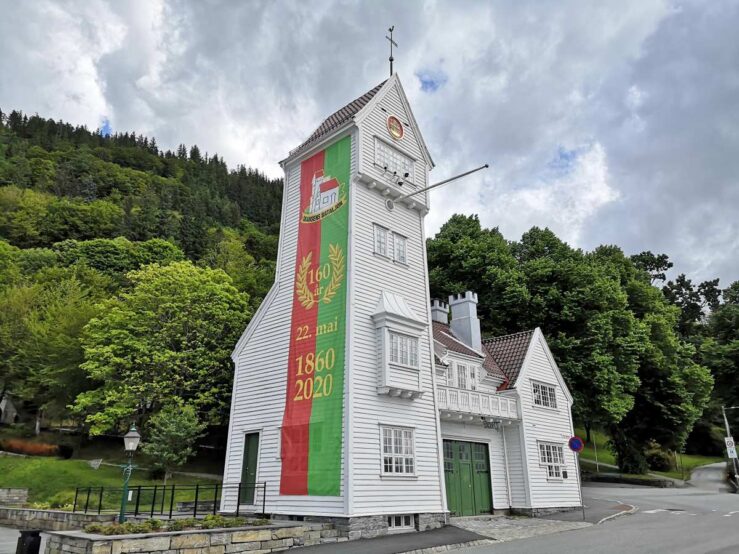
Skansen – 160-year anniversary | Photo: Travel In Culture
There is still a large pond, Skansedammen, right next to the fire station, which is the pond from where water was taken to extinguish the flames.
Every year, on 17th May, a cannon is fired up here to mark Norway’s National Day.
In the afternoon, you will enjoy the mountains and magnificent views of Bergen and the seascape.
Ride the Fløibanen funicular from the city centre up Mount Fløien into Bergen´s surrounding mountains where you can hike in the scenic nature. In a few minutes, you will be way above the busy city.
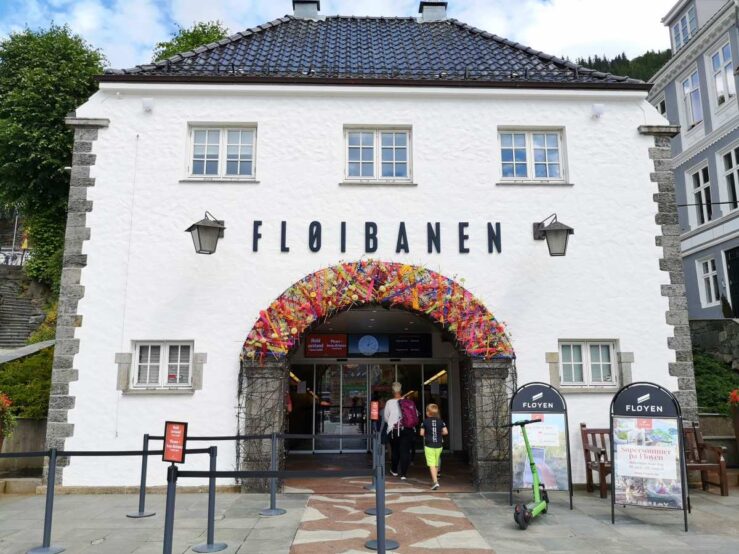
Fløibanen – one day in Bergen where you go up to Mount Fløien or Ulriken | Photo: Travel In Culture
Numerous enticing walks and nature trails start where the funicular ends, so it should be possible to find a suitable hike, whatever your preferences are. Fløibanen has existed for over a hundred years, taking people to the top of the mountain.
Another option is the Ulriken cable car, which will take you to the highest of Bergen’s seven mountains for spectacular views. You will spend a great afternoon here enjoying the awe-inspiring mountainscape and several world-class hiking options.
In the evening, you will be back at Bryggen for a well-deserved, outstanding restaurant experience!
You can also make Bergen part of a trip along the Norwegian West Coast: Things to Do in Norway – Trip West Coast – Fjords & Cities 12 Days
Going to Oslo? Then read 9 Cultural Things to Do in Oslo
Read next: Ålesund – Norway’s Art Nouveau Town
Stay 2 Days in Bergen, Norway
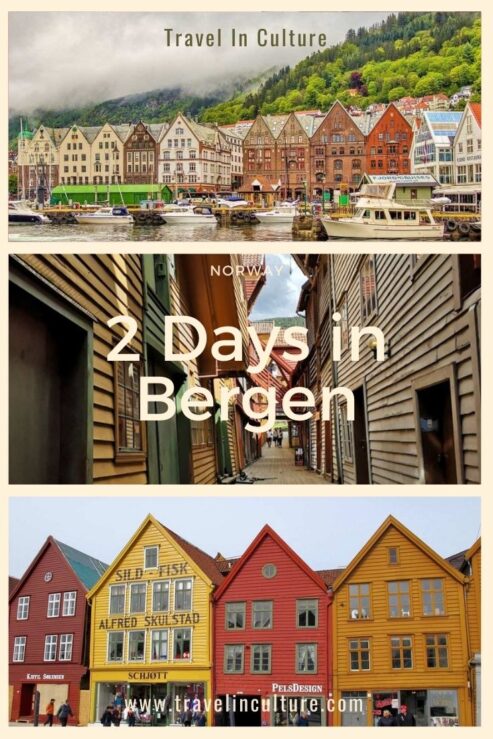
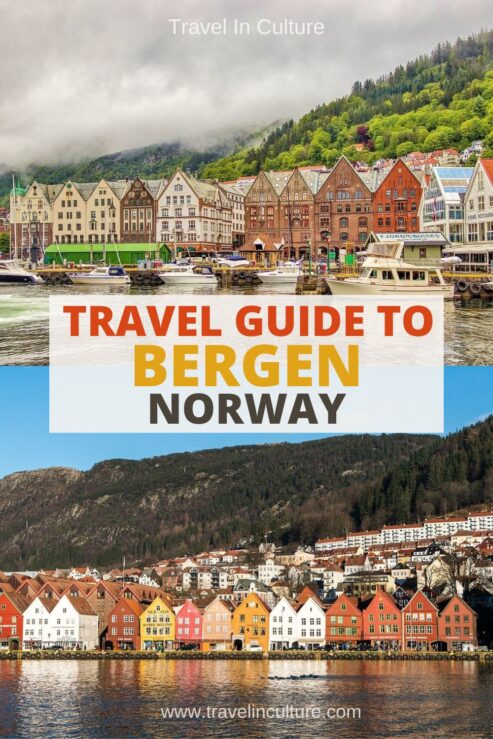
Featured image of
Stay 2 Days in Bergen, Norway:
Paolo Ghedini / Pixabay
Bergen, Norway


